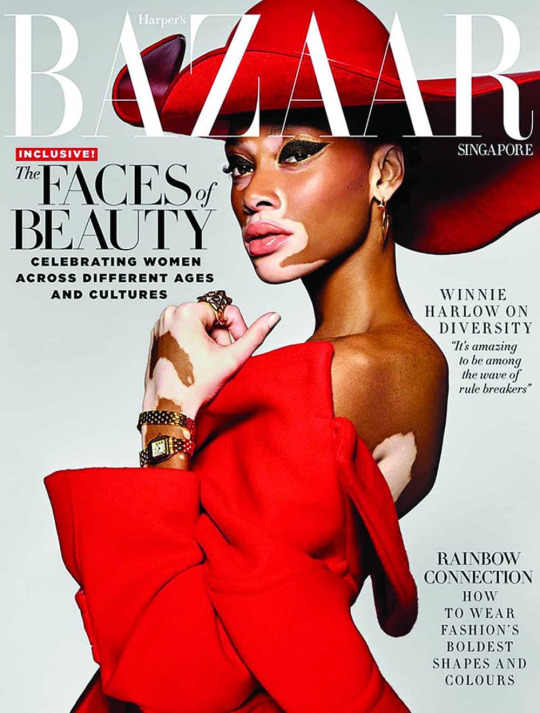#WGSST2230(2/5)
Text
Model Winnie Harlow as a Representation of Diverse Beauty Perception
Statistically, U.S. beauty standards significantly favor young, white, thin (often perilously so) women. From the tone of their skin to the color of their hair, lips, and eyes, down to their height, weight, frame and beyond, positive feedback seems to be skewed in their favor when compared with their counterparts in numerous other communities. Today media, and social media, are dominant forces in the beauty industry. Online influencers like Marlena Stell have online subscribers whose numbers reach millions, and the Internet opens up a space for two-way communication: Marlena produces content including makeup reviews and tutorials, her followers can subscribe, purchase, and review/comment, and she in turn can respond. Observation has revealed that white beauty influencers tend to gain a much more massive following than, for example, their Black or Latina counterparts. For answers to why this might be, we can begin by looking at market forces that drive this. Think, for example, about hair care product and makeup aisles at your local retail store that may feature products for African-American hair health and style on one end, but the rest of the lane and the other end are loaded with white-biased products. In this way, blind (or possibly not entirely blind?) market forces perpetuate and sell a hegemonic standard of beauty that ultimately presents an unjust disadvantage for Black and PoC customers.
BUT, there is hope yet for the growth of diversity in the beauty industry and culture. The image below is of Canadian-born model Winnie Harlow. Winnie is a fashion model with a skin pigmentation condition called vitiligo. She has also appeared on America’s Next Top Model and in several high-profile music videos. Her success should be celebrated for helping to move beauty standards toward inclusion of not only Black and PoC individuals (”onto the stages we built”), but also individuals with a unique outward phenotype - irregularities are not by definition antithetical to “beauty,” and her platform is one with the potential to illuminate hegemonic beauty standards so that they can at last be dismantled.

Images like this one should be empowering to women everywhere who have been made to feel like their “imperfections” by some destructive cultural norm somehow run antithetical to what “beauty” is. They do not. They should not. Think of the work of feminists from previous generations who were labeled as unattractive and rebellious or overly masculine simply for saying how they felt. How the standards they were held to just for being women were suffocating them.
I hope that Winnie’s example lights the torch for a multitude of others in need of their escape from an antiquated cultural sense of what “beauty” must be.
2 notes
·
View notes